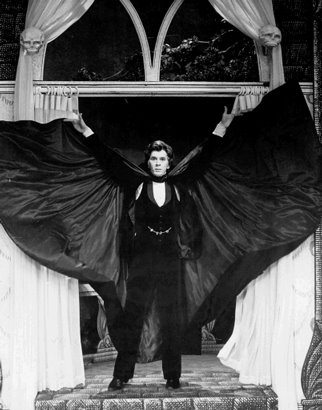Friday, November 21, 2008
A Few Comments on Video Vamps
Monday, November 3, 2008
Tentative Course Guidelines
The Vampire Image in Fiction and Film
Tentatively Planned for Quarter Three 2008-09
In this class, students will study portrayals of the vampire image in folklore, fiction, and film. Students will have the opportunity to explore the cultural and historical origins of this popular and long-lasting persona and why this image is so appealing. Students will delve into the literary roots of the vampire by reading and discussing elements of the European Gothic tradition. We’ll begin this exploration with Polidori’s The Vampyre. As a class, students will closely analyze Bram Stoker’s Dracula, focusing on themes, character development, and the historical context of the novel’s entry into the literary canon. To visually complement the themes and images presented in the written texts, students will view Murnau’s 1922 Nosferatu, Ford Coppola’s 1992 film version of Bram Stoker’s Dracula, and if time permits—Merhige’s The Shadow of the Vampire. Other film clips may be used to study the various portrayals of the vampire in the last century.
General Class Requirements
Warning: this class requires a large amount of reading with required homework.
Each student will be required to read and analyze Bram Stoker’s Dracula in small and full group discussions.
Short stories, historical context chapters, and essays on the horror genre and vampire image will be read as a group. Students may need to read and respond to these pieces as homework.
The class will also have the opportunity to analyze the genre through contemporary film. Response journals and discussions in reaction to the story, production, characterization, or other film characteristics will be required.
Creative projects also will be assigned throughout the quarter. (For example, during the first week of the quarter we will create the image of the vampire we already hold in our minds.) We may also try our hands at producing our own Gothic characters and stories later in the quarter if time permits. Students will have choices in how to articulate their own vampire personas.
Respectful and appropriate use of class time is expected from all students on all days. Any students who disrespect their classmates/instructors, quiet film viewing, silent reading time, or focused discussion sessions will simply be marked absent for the class period.
Missing and Late Work:
Students must complete all assignments in this course to be eligible for credit.
Students will have a short grace period following each major assignment due date to allow for unanticipated emergencies and time constraints. Missing a due date will also generate a contact home (either email or phone call) to update families of outstanding assignment obligations and determine if additional support is needed. If students miss the grace period deadline, they might lose eligibility for class credit. Grace period length will vary by class and assignment. Students must pay attention to each assignment’s dates. Students are expected to participate in sharing sessions and may not use those days for writing or project work time.
All students are responsible for knowing the due dates on assignments. Look at your assignment handouts and the whiteboard reminders. Ask a classmate.
If you are absent, you are still responsible for what you missed in class. Ask a fellow classmate what was done the day before and check the assignment basket for handouts or assignments.
The Shabazz attendance policy will be strictly enforced in this class. Students will be dropped after their 6th absence. Remember that all tardies are accounted for (3 tardies = 1 absence). No make-up time opportunities will be given. (If an emergency arises, inform Denise and the office immediately.)
Book Returns:
Students must return all books checked out for class to be eligible for credit. If a book is lost, talk with Denise about where you can find a replacement copy or arrange for payment of the text.
Tentative Quarter Outline:
Week Two: Folklore / Creative Vamp Project / The Comedic X-File Vampire / Historical Vampires
Week Three: View Murnau’s Nosferatu / The Gothic Tradition / Polidori’s “The Vampyre”
Week Four: Discuss Polidori’s Vampyre / Historical Context of Stoker’s Dracula / Begin Dracula Reading, Group Work, and Discussions
Week Five: Mid-Q Reports / Dracula Groups
Week Six: Dracula Groups and Discussions
Week Seven: Dracula Groups and Discussions / Projects
Week Eight: Finish Dracula /
Week Nine: View Bram Stoker’s Dracula (Coppola)
Week Ten: View Shadow of the Vampire (Merhige)




